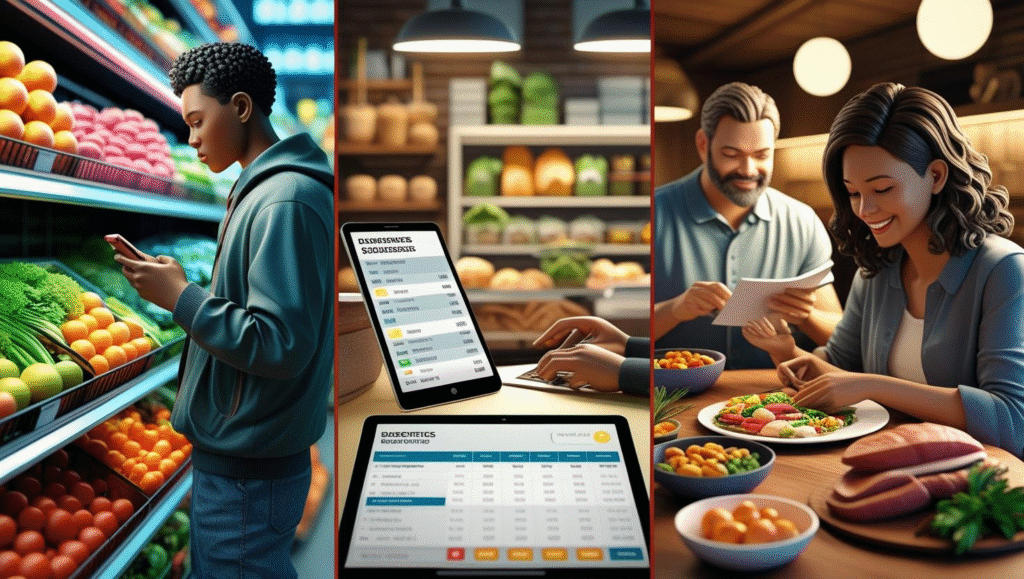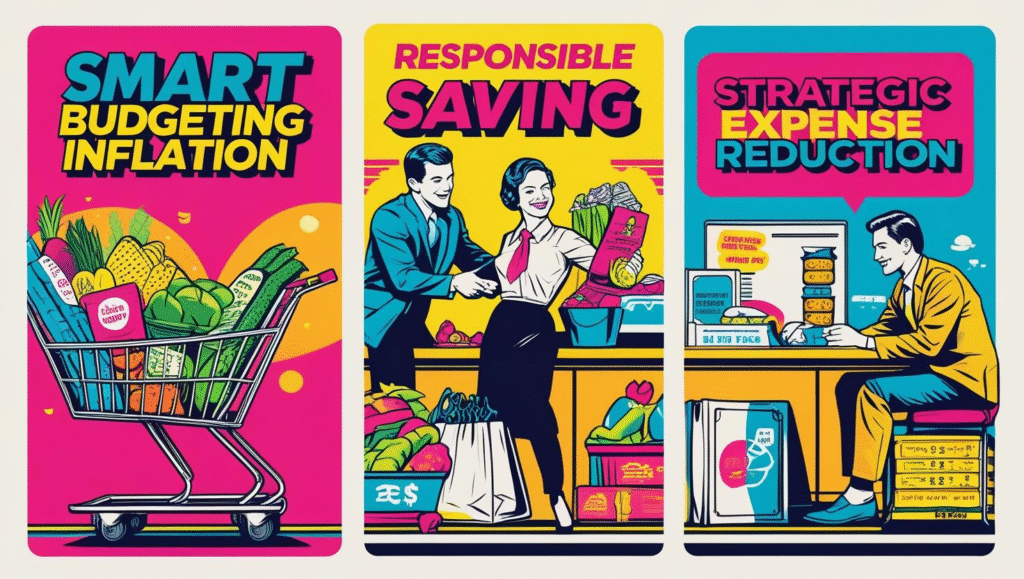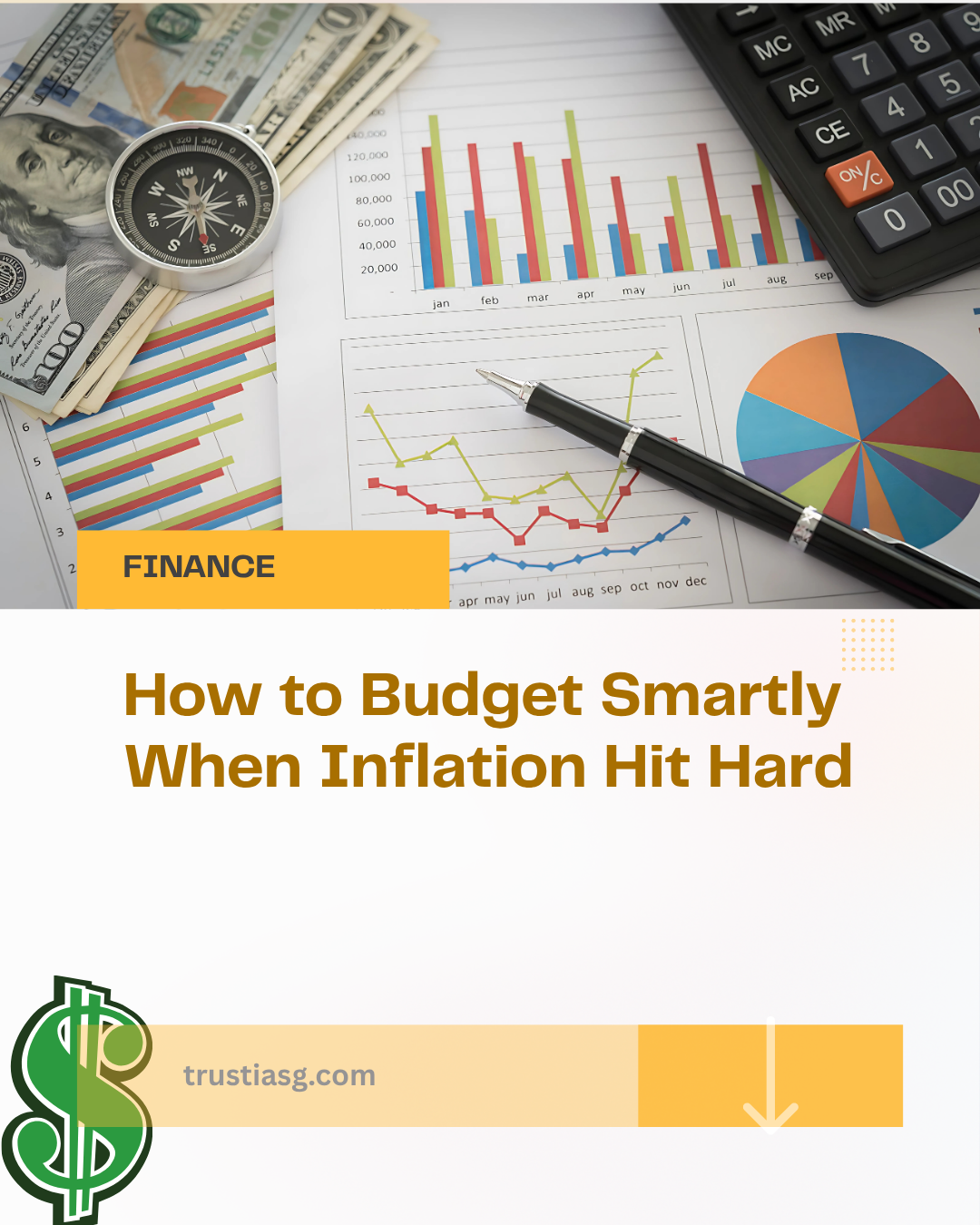You don’t even notice inflation until it hits you. The first thing you usually notice is groceries cost a little more, utility bills start going up, and suddenly last year’s budget makes little sense anymore. For many people, this shift is both inconvenient and stressful.
This guide gives you easy ways to handle inflation and budget better
Why Budgeting During Inflation Matters?
Inflation impacts us all, but some more than others. Retirees, students, and low-income families are most affected. Higher prices make last year’s budget unrealistic. Quick budget changes lessen inflation’s effects.
Step 1: Recognize Where Inflation Is Hurting You Most
Before you can adjust, you need to observe. Review the past three months of your bank and credit card statements. Where are your costs rising the fastest?
Look especially at:
- Groceries and food delivery
- Gas and transportation
- Utilities and home services
- Health and personal care items
- Subscriptions expenses

Step 2: Update your budget.
Inflation causes budget revisions and new priorities. Apply this basic budget formula that is adjusted for inflation.
The Inflation-Aware 50/30/20 Rule
50% Needs–Rent, food, transportation, insurance
30% Choices–Subscriptions, hobbies, entertainment
20% Savings/Debt–Emergency fund, retirement, loan payments
Now tweak it to:
60% Needs (temporarily increased)
20% Wants
20% Savings/Debt
This shift allows more room for inflation-driven expenses while still keeping savings a priority. The goal is balance, not restriction.
Step 3: Cut Smart, Not Deep
People cut what makes them happy first when they need to save money. This often backfires, causing you to feel empty inside, which then causes you to rebound and over spend.
Instead, cut with purpose:
Switch to store-brand groceries instead of cutting meals
Reduce streaming subscriptions, not all entertainment
Lower cost of hobbies instead of quitting them

Step 4: Automate Your Essentials
Once you map out your new budget, set your most important expenses to be automatic.
Set bills to autopay
Automate savings transfers.
Use apps to help you budget.
Automation reduces financial stress. This helps you manage expenses during inflation without burning out.
Step 5: Find Enjoyment Even During High Inflation
Inflation may raise prices, but don’t let it steal your joy.
Ask Yourself:
What makes me feel at peace that doesn’t cost much?
What passions have I let slip because of financial stress?
Where can I create instead of consume?
Step 6: Build Your Inflation Coping Strategies Toolkit
To thrive through high prices, you’ll need more than budgeting alone. Let’s round out your toolkit with inflation coping strategies that build resilience:
Embrace Simple Routines
Make small habits part of your daily life:
- Weekly meal planning
- Batch cooking and freezing meals
- Managing daily expenses with cash envelopes.
Investigate additional income sources.
Side hustles don’t have to be exhausting. Selling handmade goods or monetizing a hobby can create an unexpected breathing room.
Create a “Joy Fund”
Put aside a little each month, even $10, for something you enjoy. A little fun money helps keep me on track with my main budget.
Join a Community
Join Facebook groups or local meetups to connect. Like-minded company is uplifting.
In Closing
- You can achieve financial security even with inflation.
- High inflation can be countered with careful budgeting.
- Smart budgeting helps manage money. You can still enjoy life despite rising prices.
- Take that next small step. Update your budget. Brew coffee at home. Sew a gift instead of buying one. Every small choice builds resilience and beauty.
Suggested Tools and Resources
Here are some budgeting tools that others have found helpful:
YNAB (You Need a Budget)–This is a great for hands-on zero-based budgeting
GoodBudget–Envelope budgeting made digital
Tiller Money–Spreadsheet-based budget automation
Click HERE for more resources to help you navigate your finances.
Click HERE to check out our financial and economics calculators.




